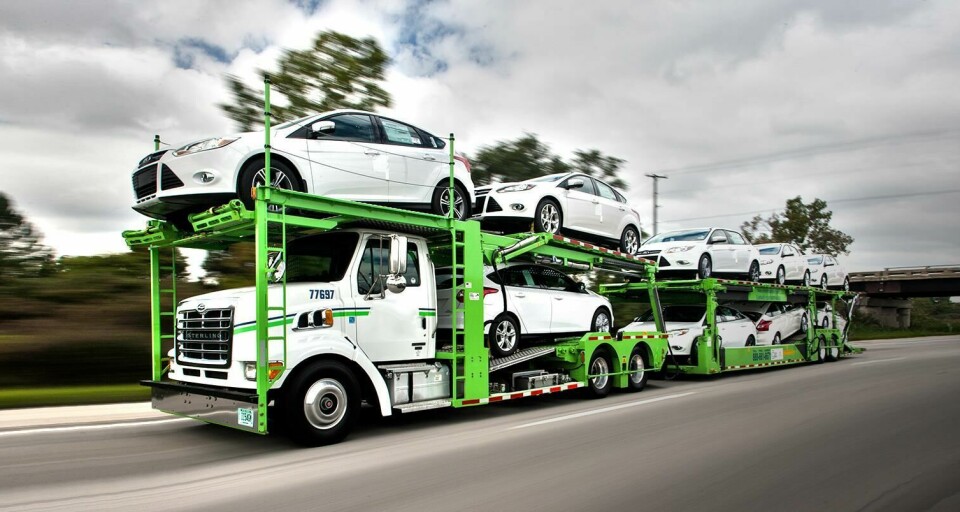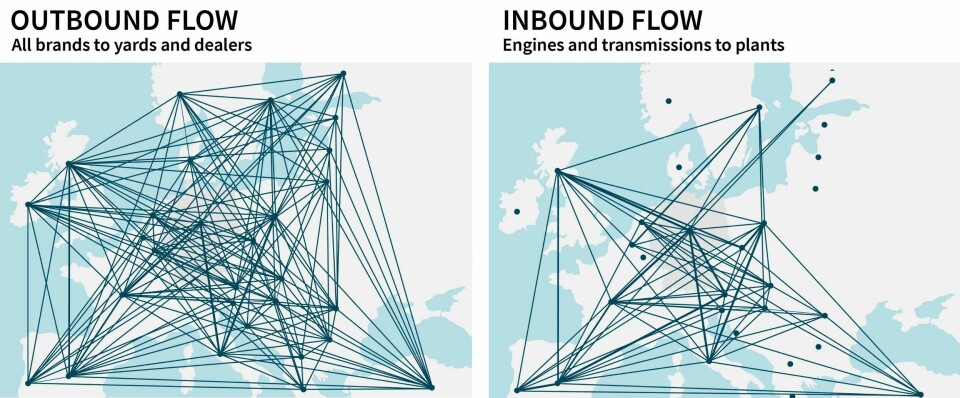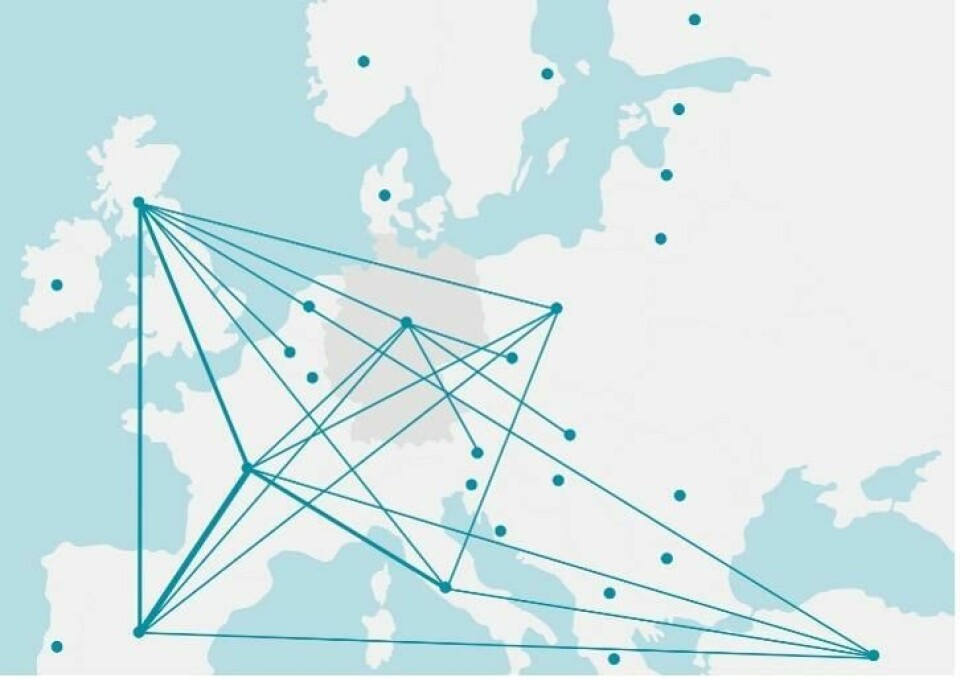Reflections on AI, collaborations and sustainability in the automotive supply chain
Are sustainability and cost efficiency mutually exclusive? Specialising in AI and optimisation software for operational decision-making, software developer INFORM disagrees

State-of-the-art optimisation algorithms and cross-enterprise cooperation could be key in coming to grips with both while helping the industry shape new ways of operating vehicle logistics networks.
Supply chain management often seems to be about following one main corporate objective: be it resilience, sustainability or cost efficiency. Yet technologies are already available today to view and manage supply chains in a more differentiated way. What could this view actually look like?
Over the past few months, the automotive industry has seen a range of emerging trends and disruptions that are having a lasting impact on current and future operations. From the shift to electromobility to supply chain shortages, to increasing prices of raw materials, to the ripple effects of the pandemic, along with isolated incidents like the Suez Canal blockage and major automotive supply chain mergers – all have had supply chain leader’s hands full as they try to find spontaneous solutions to disruptions.
![Figure 1 [click to expand]: The immense complexity of modern vehicle networks requires the use of smart software solutions for strategic planning. Source: © INFORM GmbH Inform_Picture 1](https://image.automotivelogistics.media/178738.webp?imageId=178738&width=960&height=578&format=jpg)
In 2020, worldwide motor vehicle production declined by more than 32% in the second quarter of 2020 and by almost 23% in the third quarter compared to the same quarter of the previous year. But even with fewer vehicles around, getting the right car to the right place at the right time with utmost cost efficiency remains a critical challenge.
This is because finished vehicle logistics networks quickly grow into immensely complex constructs. They involve transport routes from the plant to ports, through compounds and ultimately to dealers, all while managing many different means of transport, carriers and other operational considerations, like costs, emissions, new vehicle certifications or minimal shipping volumes. For example, supply chain managers must take into account their carriers’ contract conditions (rates, capacities, lead and dwell times) as well as the quality of their work (damages, on-time performance and new technologies).
At the Automotive Logistics and Supply Chain North America Live conference held during February 2021, Rick Wishon, planning and communications manager at Toyota Logistics Services (TLS), confirmed: “When we think about the possibilities looking at multiple carriers bidding over these various options – different ports, different distribution centers, obviously the different dealers, [also] looking at rail moving from origin through an interchange to a variety of ramps – our number of possibilities grows to 1.8m per scenario. If we start talking about the amount of data that the tool needs to consider, it gets quite sizeable very quickly.”
At the conference, TLS and INFORM reported on a case study about how TLS is using optimisation tools and services from INFORM to engineer its US outbound logistics network of 58,000 active routes. Rick Wishon concluded: “It’s a tough bit of work, it’s about a year worth of effort, but at the end of the day the benefits that I think we see and the strength of our network reflects that.”
Thus, the need to use intelligent software for strategic network optimisation arises from understanding the impact of changes in the supply chain and adapt the networks accordingly – in an optimised way.

Pressure to include sustainability in strategic planning mounts
However, we are facing exactly that: frequent supply chain disruptions and the pressing issues of climate change. Even when the current pandemic is over, the latter will continue to challenge us for a very long time. To reach the sustainability goals set by the Paris Agreement or the net-zero emission goals of the EU and individual countries, concrete action beyond managing complexity in a cost-efficient way is necessary. Fortunately, it seems like more and more people are looking into this and taking action.
In a recently published supply chain report, the Capgemini Research Institute surveyed 1,000 different organisations from various industries all over Europe, the US and China. While 66% of organisations primarily invested into supply chains to reduce costs, 45% stated that they were looking into boosting resilience and sustainability of their supply chains while keeping a firm control on costs. However, over a quarter (27%) are willing to increase their supply chain costs by as much as 19% in the next three years to improve resilience, and by 18% to improve sustainability.
By now, many OEMs have pledged to enable carbon neutral manufacturing or build CO₂ neutral supply chains, thus contributing to net-zero global emissions by 2050, which will also affect all the companies who make up their supply network. With the ever-increasing complex web of network considerations, solutions driven by AI and mathematical optimisation algorithms will become paramount to organisational success.
Prioritising network goals with the help of optimisation algorithms
Mathematical optimisation algorithms based on operations research, INFORM’s area of expertise for over 50 years, have the great advantage of being able to deal well with huge amounts of data and complex processes involved in strategic network planning. This data is then translated into mathematical decision models via the algorithms which consider a wide variety of scenarios through complex simulations, and digital decision making. As part of this process, algorithms incorporate the decision model to factor in all relevant decision criteria in order to recommend the optimal course of action to planners and dispatchers.

But what does optimal mean? This is where the magic happens. Of course, it is up to the operation team to decide which criteria and goals the algorithms should work towards in fine tuning the network. To prove this, a case study was conducted for an automobile manufacturer who wanted to optimise its outbound flows from plants around the world (USA, South Africa, UK, Germany) to the corresponding dealerships in the Polish market. The key goals were to determine what transport volumes should be carried out via which routes, while selecting the most suitable ports. The algorithms were ’tasked’ with creating many different scenarios, each optimised according to a different goal. Three of these scenarios have been designed to achieve the following: highest cost efficiency, lowest carbon footprint and shortest transport lead times. Please note: the results are highly dependent on input values which may have changed since the study was conducted.
The system succeeded in creating significantly improved logistics networks for all three goals (see Figure 2), all of which were feasible to implement, proving that companies are already in a position to move toward meeting alternative goals such as improved sustainability. Similarly, a network-specific balance between cost, reduced lead times and lowered emissions can also be achieved depending on the prioritisation of the optimisation goals.
The responsibility of all stakeholders
While the previous example already offers a valuable approach for individual companies, cross-company collaborations on climate change will pull the real big levers of impact. Of course, this also has an underlying economical component: in recent years, management consultancies have already come up with several concepts to include social and ecological effects of entrepreneurial activities in the definition of ‘value’, for example, KPMG’s framework of “True Value”.
If we look at the inbound and outbound flows of the entire automotive industry – plants, ports, rail heads, and suppliers (including those from the increasingly important EV battery industry) – we can actually see an even more holistic vision emerging. For the sake of simplicity, let us look at the European market as an example (see Figure 3).
Network planning can map all strategic points in the entire supply chain and structure them in a sensible way depending on the key objectives. More importantly, how should the flow and routes look in the future as volumes grow, new models or factories launch, or new markets are entered?

In the future we could look at current transport networks, in order to identify synergies between certain routes and modes of transport with the shortest routes and lowest emissions. With shared capacities and route structure, an inter-European automotive logistics system could emerge in which, for example, vehicles and engines are transported in opposite directions on the same route while avoiding empty runs. (see Figure 4). The idea could also be adapted to other industries as well.
Bundling all these flows would be a win-win situation, as such cooperation could leverage immense potential, both ecologically and economically. A number of initiatives are on-going to resolve anti-trust concerns around such a cooperation (eg at ELUPEG).
Will companies have the courage to follow such a path? With the help of AI and mathematical optimisation, it is possible to identify the potential savings.

Ruud Vossebeld has worked at INFORM since 2010 as director of business development, focusing on manufacturing and ports logistics. With his background in the automotive industry (DAF Trucks, Nissan Europe) and supply chain software (Baan Company and global supply chain software companies) he is interested in new innovations in the area of automotive, technology, ports and logistics. Over the next 10 years Vossebeld is looking at digitalisation, optimisation and greenification of the manufacturing industry and its supply chain network as the exciting topics to come.





